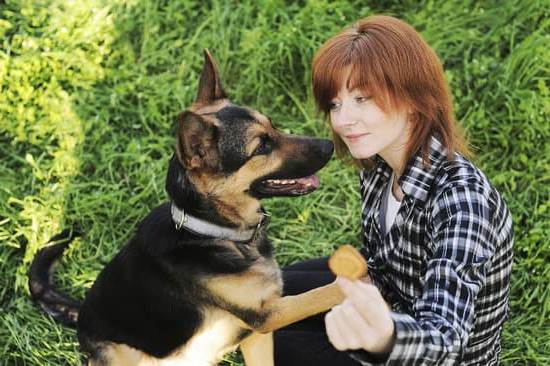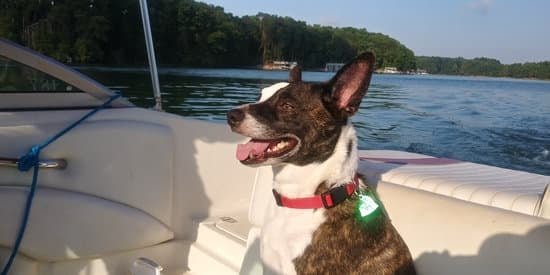Is your dog afraid of everything? In this article, we will explore how to train a dog that is afraid of everything. Understanding the reasons behind a dog’s fear is crucial when it comes to helping them overcome it. Recognizing the signs and symptoms of fear in dogs, creating a safe environment, and utilizing techniques such as desensitization and counterconditioning are all essential components in training a fearful dog.
Dogs can exhibit fear for various reasons, whether it be due to past trauma, lack of socialization, or genetics. It is important to understand the underlying causes of their fear in order to address it effectively. Recognizing the behavior and body language of a fearful dog is also key in determining how best to approach their training.
Sometimes, seeking the assistance of a professional dog trainer or behaviorist may be necessary when dealing with a severely fearful dog. However, there are also many techniques that pet owners can implement at home to help their furry companions gain confidence and overcome their fears. By creating a safe and secure environment, using positive reinforcement training, and being patient and consistent, you can make significant progress in training a fearful dog.
Signs and Symptoms
Recognizing a fearful dog can be crucial in helping them overcome their anxieties. Dogs express fear in various ways, and understanding these signs and symptoms can aid in addressing their concerns effectively.
Body Language
A fearful dog may exhibit certain body language cues, such as trembling, tail tucking, cowering, or attempting to hide. They may also display dilated pupils, ears pressed back against the head, and a low body posture. Understanding these physical indicators can help owners and trainers identify when a dog is feeling anxious or afraid.
Behavioral Signs
In addition to their body language, fearful dogs may show behavioral signs of anxiety. This could include excessive panting, drooling, pacing, whining or barking excessively without apparent reason. In more severe cases, a fearful dog may exhibit destructive behaviors such as chewing on furniture or harming themselves in an attempt to escape from their fear-inducing environment.
Recognizing these signs and symptoms can enable owners and trainers to intervene appropriately. By acknowledging the distress signals of a fearful dog, individuals can take the necessary steps to create a safe environment for their pet and provide the support and training needed to alleviate their fears.
Professional Help
When dealing with a dog that is afraid of everything, it’s important to recognize when the situation may require professional help. While some cases of fear in dogs can be managed through training and desensitization techniques, there are instances where the expertise of a professional dog trainer or behaviorist is necessary. Here are some signs that indicate it may be time to seek professional assistance:
- Extreme Aggression: If the fearful behavior escalates to extreme aggression towards people or other animals, it’s crucial to involve a professional who can assess and address this issue.
- Past Trauma: Dogs with a history of past trauma or abuse may require specialized care and intervention from a professional who has experience in working with traumatized animals.
- Uncontrollable Anxiety: When a dog’s fear results in uncontrollable anxiety that interferes with their quality of life, seeking the guidance of a professional can make a significant difference.
Professional trainers and behaviorists have the knowledge and experience to evaluate the root cause of a dog’s fear and develop tailored training plans to address these issues effectively. By seeking their assistance, you can gain valuable insights into your dog’s behavior and receive expert guidance on how to help them overcome their fears in a safe and structured manner.
In addition, professionals can provide support for pet owners who may feel overwhelmed or uncertain about how to best help their fearful dog. Their expertise can offer reassurance and direction, ultimately leading to improved well-being for both the dog and their owner.
Creating a Safe Environment
Creating a safe and secure environment for a fearful dog is crucial in helping them overcome their fears and anxieties. One important tip is to provide a designated safe space for the dog, such as a crate or a quiet corner in the house, where they can retreat to when feeling overwhelmed.
This space should be comfortable and filled with familiar items like their favorite toys or blankets. It’s important to ensure that this area is off-limits to other pets or people, allowing the fearful dog to have a place of refuge.
In addition to providing a safe space, it’s essential to establish a predictable routine for the dog. Consistency in feeding times, walks, playtime, and training sessions can help create a sense of security for the dog. An established routine can also help reduce any environmental stressors that may trigger fear or anxiety in the dog.
Another tip for creating a safe environment for a fearful dog is to minimize exposure to potential triggers. For example, if the dog is afraid of loud noises, such as thunderstorms or fireworks, it’s helpful to create a quiet and calm environment during these events. This may involve playing soothing music, using white noise machines, or providing the dog with a comforting item like a ThunderShirt.
By implementing these tips and creating a safe environment for a fearful dog, pet owners can help their canine companions feel more secure and less anxious in their surroundings. This foundation of safety and comfort will also contribute positively to the success of other training techniques aimed at addressing the dog’s fears.
Desensitization and Counterconditioning
Understanding Desensitization
Desensitization involves exposing the dog to their fear trigger at a level that does not provoke an anxious or fearful response. This exposure is then gradually increased over time as the dog becomes more comfortable and gains confidence. For example, if a dog is afraid of loud noises, such as thunderstorms or fireworks, desensitization may involve playing recorded sounds of these noises at a very low volume while engaging the dog in a favorite activity or providing treats.
Implementing Counterconditioning
Counterconditioning works hand in hand with desensitization by pairing the feared stimulus with something positive, such as food or play, to change the dog’s emotional response. When a fearful dog begins to associate something scary with something enjoyable, it can help them form new, positive associations. For instance, if a dog is fearful of strangers, counterconditioning may involve having visitors give the dog treats or engage in playtime to create positive associations with new people.
Consistency and Patience
Both desensitization and counterconditioning require patience and consistency from the owner or trainer. It’s crucial to start at a level where the dog feels safe and gradually increase exposure only when they are ready. Rushing this process can heighten the dog’s fear rather than diminish it.
Additionally, it’s important to remain consistent in implementing these techniques every day to see progress over time. Building trust is also essential during this process as it will make these techniques more effective for the fearful dog.
Positive Reinforcement Training
One way to use positive reinforcement with a fearful dog is to reward them with treats or praise when they display calm and non-fearful behavior. For example, if a dog is anxious around strangers, owners can give the dog treats and praise when they show signs of calmness in the presence of unfamiliar individuals. Over time, the dog will begin to associate strangers with positive experiences, which can help reduce their fear.
Consistency is key when using positive reinforcement to train a fearful dog. It’s important for owners to consistently reward desirable behaviors and ignore or redirect undesirable ones. This approach helps dogs understand that certain behaviors result in positive outcomes, which can increase their confidence and reduce fear. Additionally, patience is crucial as progress may take time, but with consistency and positive reinforcement, fearful dogs can learn to overcome their anxieties.
| Positive Reinforcement Training Techniques | Benefits |
|---|---|
| Rewarding calm behavior around triggers | Helps build positive associations |
| Consistent use of treats and praise | Encourages desirable behaviors |
Patience and Consistency
Training a dog that is afraid of everything requires an immense amount of patience and consistency. It’s important for dog owners to understand that progress will not happen overnight, and it may take weeks or even months to see significant improvements in their dog’s behavior.
Consistency is key in reinforcing positive behaviors and gradually desensitizing the dog to their fears. This means maintaining a regular training schedule, using the same commands and cues, and providing a secure and predictable environment for the dog.
Consistency also plays a crucial role in building trust with a fearful dog. When a dog feels safe and understands what is expected of them through consistent training methods, they are more likely to respond positively and develop confidence over time. Inconsistencies in training can lead to confusion and anxiety in the dog, hindering their progress and potentially exacerbating their fearful behaviors.
It’s important for dog owners to approach training with patience, understanding that each dog progresses at their own pace. Pushing a fearful dog too hard or expecting quick results can be detrimental to their well-being and ultimately counterproductive to the training process. Patience allows for the gradual desensitization and counterconditioning techniques to take effect, helping the dog build confidence in a slow but sustainable manner.
| Key Points | Explanation |
|---|---|
| Consistent Training | Maintaining regular schedule, commands, cues, and environment |
| Building Trust | Consistent training methods help build trust with the fearful dog |
| Patience | Allowing for gradual progress instead of expecting quick results |
Building Trust
Building trust with a fearful dog is crucial in helping them overcome their fears and develop a strong bond with their owner. One of the first steps in building trust is to create a safe and secure environment for the dog. This can include providing a comfortable space where the dog feels secure, avoiding situations that may trigger fear, and offering plenty of positive reinforcement.
Another important aspect of building trust is to be patient and consistent in your interactions with the dog. Understand that it may take time for the dog to feel comfortable and secure, so it’s essential to approach them with patience and understanding. Consistency in training methods and routines can also help the dog feel more at ease and build trust in their owner.
In addition to creating a safe environment and being patient, using positive reinforcement techniques can also help build trust with a fearful dog. Rewarding the dog for any signs of progress, no matter how small, can go a long way in building confidence and trust.
This can include using treats, praise, or play as a reward for exhibiting bravery or overcoming a fear-inducing situation. Overall, building trust with a fearful dog requires patience, consistency, and plenty of positive reinforcement to help them feel safe and develop a strong bond with their owner.
Maintaining Progress
Once you have started training a fearful dog and have seen progress, it is important to focus on maintaining that progress. Consistency is key when it comes to working with a fearful dog, as any setbacks can be detrimental to their confidence and trust. One important strategy for maintaining progress is to continue practicing desensitization and counterconditioning techniques. These methods involve gradually exposing the dog to their fears in a positive way, and should be consistently implemented to prevent regression.
In addition to continuing desensitization and counterconditioning, positive reinforcement training should also be consistently used to build confidence in a fearful dog. Rewards, praise, and treats can go a long way in encouraging positive behavior and helping the dog feel more secure in their environment. This type of training should be an ongoing process to reinforce the progress that has been made.
Furthermore, maintaining progress also involves creating a safe environment for the dog at all times. This means being mindful of potential triggers or stressful situations that could cause fear or anxiety. By providing a secure living space and avoiding known stressors, you can help the dog feel more relaxed and confident. It’s important for owners to remain patient and understanding throughout this process, as maintaining progress will require continued dedication and compassion towards the fearful dog.
Conclusion
In conclusion, training a dog that is afraid of everything requires patience, compassion, and understanding. It is essential to recognize the signs and symptoms of fear in dogs, as well as to understand the underlying reasons behind their fear. By creating a safe environment and seeking professional help when necessary, dog owners can make a significant impact on their pet’s well-being.
Desensitization and counterconditioning are valuable techniques for gradually exposing a fearful dog to their fears in a positive way. Positive reinforcement training, patience, and consistency are also crucial elements of helping a fearful dog build confidence and trust. Building a strong bond with the dog through love and care will ultimately lead to progress in overcoming their fears.
It is important for dog owners to maintain the progress made in training their fearful dog by continuing to provide a safe and supportive environment. Finally, it is crucial to reiterate the necessity of being patient and compassionate throughout the entire training process. With time and effort, it is possible to help a fearful dog overcome its anxieties and live a happier, more fulfilling life.
Frequently Asked Questions
How Do I Stop My Dog From Being Scared of Everything?
Helping a dog overcome fear can be a gradual process that involves patience and positive reinforcement. Providing a safe and secure environment, exposing the dog to new experiences in a gradual and controlled manner, and using treats or toys to create positive associations can help build the dog’s confidence.
It’s important to avoid forcing the dog into situations that may trigger fear and instead focus on creating a positive experience.
Can a Fearful Dog Be Cured?
While there is no guarantee that a fearful dog can be completely cured, many dogs can learn to manage their fears and live happy lives with proper training and support. Professional help from a veterinarian or animal behaviorist may be necessary to develop an appropriate behavior modification plan for the specific needs of the dog.
Why Is My Dog Literally Scared of Everything?
Dogs may become scared of everything due to various reasons including lack of socialization during critical developmental periods, past traumatic experiences, genetic predisposition, or underlying health issues. Identifying the root cause of the fear is essential in addressing the problem effectively. Understanding the triggers and working on desensitization techniques can help the dog gradually overcome its fears.

Welcome to the blog! I am a professional dog trainer and have been working with dogs for many years. In this blog, I will be discussing various topics related to dog training, including tips, tricks, and advice. I hope you find this information helpful and informative. Thanks for reading!





